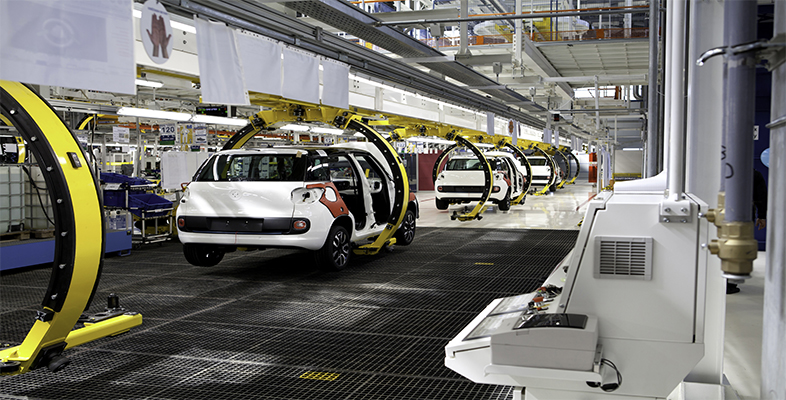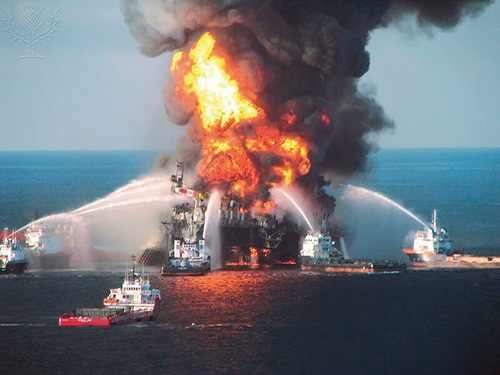Deepwater Horizon
Deepwater Horizon was an offshore drilling rig designed to drill holes into the ocean floor to explore for oil. In 2010 it was operating on the Macondo well in the Gulf of Mexico off the coast of Louisiana, USA when, according to BP’s accident investigation report:
On the evening of April 20, 2010, a well control event allowed hydrocarbons to escape from the Macondo well onto Transocean’s Deepwater Horizon, resulting in explosions and fire on the rig [Figure 5]. Eleven people lost their lives, and 17 others were injured. The fire, which was fed by hydrocarbons from the well, continued for 36 hours until the rig sank. Hydrocarbons continued to flow from the reservoir through the wellbore and the blowout preventer (BOP) for 87 days, causing a spill of national significance.
[…]
The team did not identify any single action or inaction that caused this accident. Rather, a complex and interlinked series of mechanical failures, human judgments, engineering design, operational implementation and team interfaces came together to allow the initiation and escalation of the accident. Multiple companies, work teams and circumstances were involved over time.
The investigation found that there were eight interlinked events that were found to contribute to the overall accident:
- A cement barrier designed to isolate the hydrocarbons in the well was inadequate.
- A valve designed to prevent hydrocarbons from entering the well casing failed.
- The results of a pressure test that indicated there was a problem were misinterpreted.
- The readings from pressure sensors that showed there was a problem were not identified or acted on until hydrocarbons were escaping from the BOP.
- The escaping fluids were diverted to the mud gas separator (MGS) rather than to the overboard diverter line. Had the diversion been to the diverter line, this may well have given those involved more time to respond, thereby reducing the consequences of the incident.
- Diversion to the MGS meant that hydrocarbons were vented onto the rig, increasing the likelihood of them coming into contact with a source of ignition.
- The fire and gas control system was inadequate.
- Three methods for operating the BOP in emergency mode all failed to seal the well.
The large accident occurred because of the failure in all these smaller but interlinked events, demonstrating the importance of preventing even the most apparently minor incidents.

